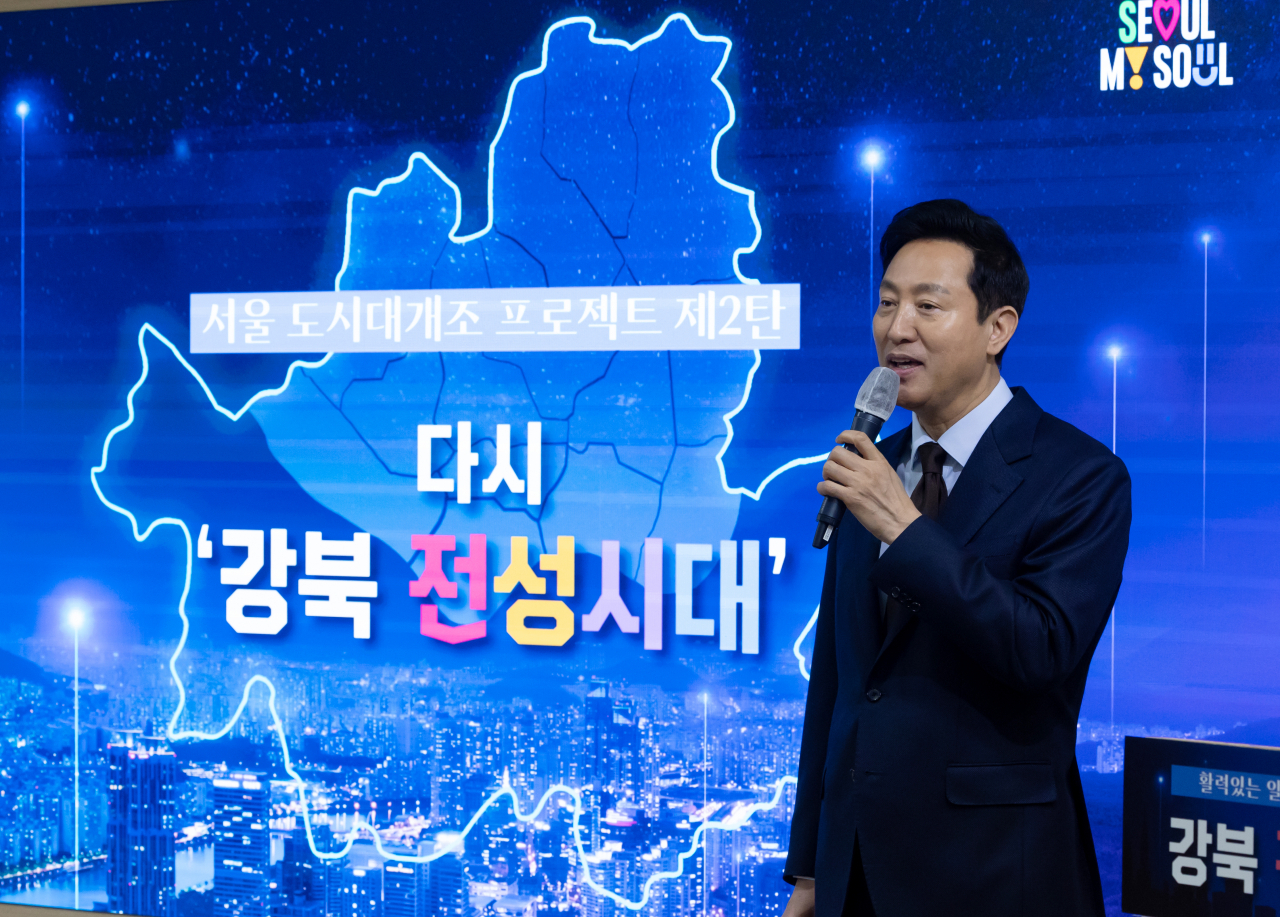
The Seoul Metropolitan Government on Tuesday unveiled plans to transform a major part of the city north of the Han River into a new economic center, one that is "up to the level of Gangnam."
During the briefing, Seoul Mayor Oh Se-hoon said the city government plans to redevelop areas of Seoul north of the Han River by easing regulations placed on residential and commercial areas that are more than 30 years old, turning them into high-tech industrial clusters and new residential areas with green space within 20 minutes.
A total of 11 out of Seoul's 25 districts are included in the city’s massive redevelopment plans. The districts include: Gangbuk-gu, Gwangjin-gu, Nowon-gu, Dobong-gu, Dongdaemun-gu, Seongdong-gu, Seongbuk-gu, Jungnang-gu, Mapo-gu, Seodaemun-gu and Eunpyeong-gu.
According to the city government, the 11 districts make up around 40 percent of Seoul and are home to 4.48 million people, which is nearly 43 percent of the city’s total population.
“Despite its large area and population numbers, the total area with commercial facilities is small and its gross regional domestic product is at the bottom of the list,” said Oh during Tuesday’s briefing, when comparing the GRDP of the 11 districts with that of Seoul's other 14 districts.
Forty-six percent of Seoul's residential buildings more than 30 years old are located in these areas. The city government said it will redevelop these residential areas by easing reconstruction and redevelopment regulations.
Additionally, the city government plans to propose local ordinance amendments to reduce the “level of blight,” which is required to qualify residential buildings for redevelopment, from 67 percent to 60 percent. Low-rise residential buildings that do not have corridors with a width of at least 6 meters, deemed sufficient for residents to escape in case a fire breaks out, will also be eligible for redevelopment. According to the city government, these eased reconstruction regulations will allow the total area qualified for development in the region to increase from 2.86 million square meters to 8 million square meters.
The commercial area quota system, which provides a quota for the total number of commercial spaces that are allowed to be set up in a certain region, will also be abolished in these 11 districts. The city government plans to add more than two to three times the current number of commercial facilities in the areas of Seoul north of the Han River in a bid to help "revive the local economy" and create jobs by expanding commercial areas.
The mayor also mentioned that the Seoul city government will add more small-scale green spaces near residential areas and city boulevards, as well as streamfront areas along the Bulgwangcheon, Jeongneungcheon, Jungnangcheon and Uicheon by 2025. More cultural spaces, such as sports complexes and libraries, will also be established.
“The areas north of the Han River in Seoul have been excluded from urban development over the past 50 years,” said Oh. “The city government will provide extensive support and ease its regulations to transform the region from being a 'commuter town' into a 'new economy city' that drives Seoul’s city competitiveness," according to him.
Tuesday’s plans to redevelop these 11 districts in north and northwest Seoul are the city government’s second set of plans associated with its “Major Urban Renewal Project.” On Feb. 27, the Seoul Metropolitan Government unveiled a set of plans to redevelop southwest Seoul's seven districts of Yeongdeungpo-gu, Guro-gu, Geumcheon-gu, Gangseo-gu, Yangcheon-gu, Gwanak-gu and Dongjak-gu into an “Industrial Innovation Zone” as its first "Major Urban Renewal Project."




















